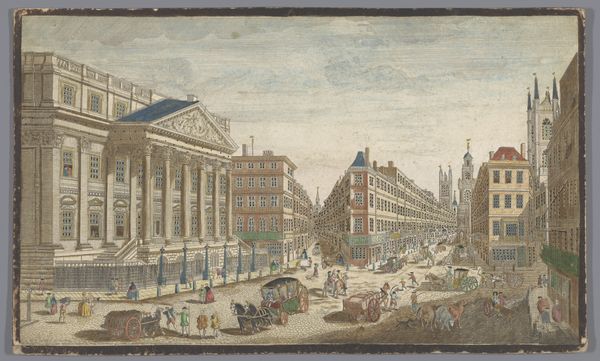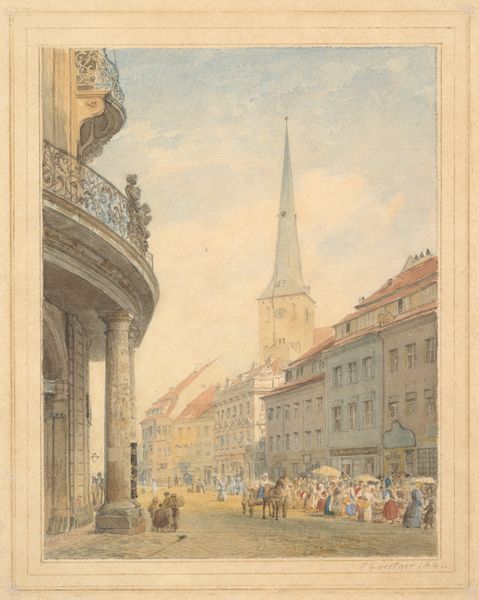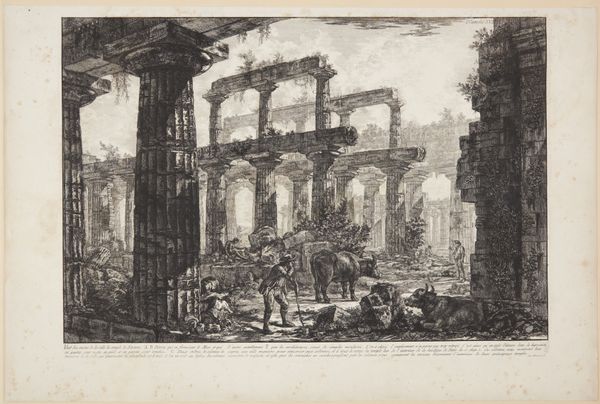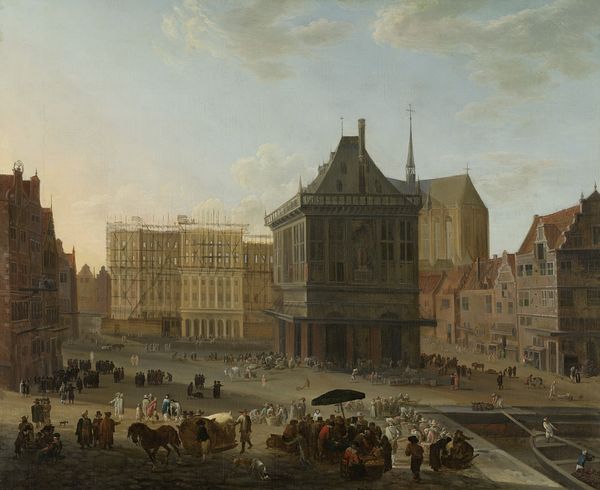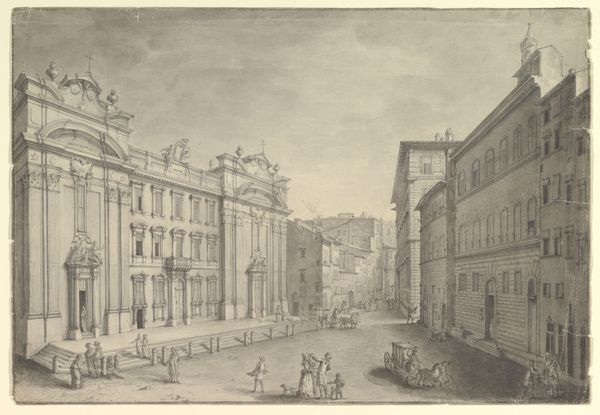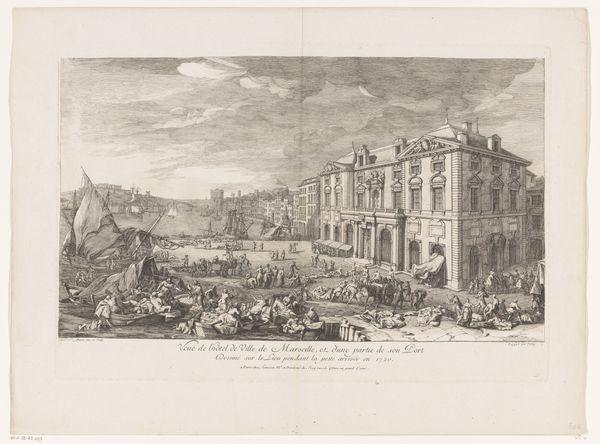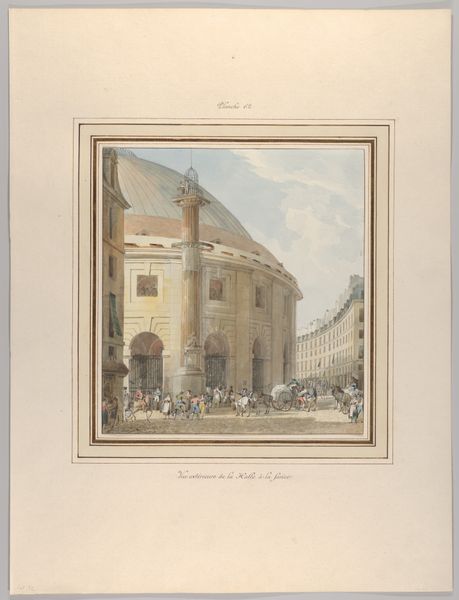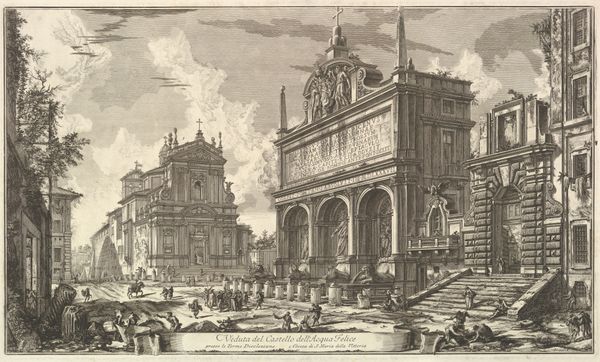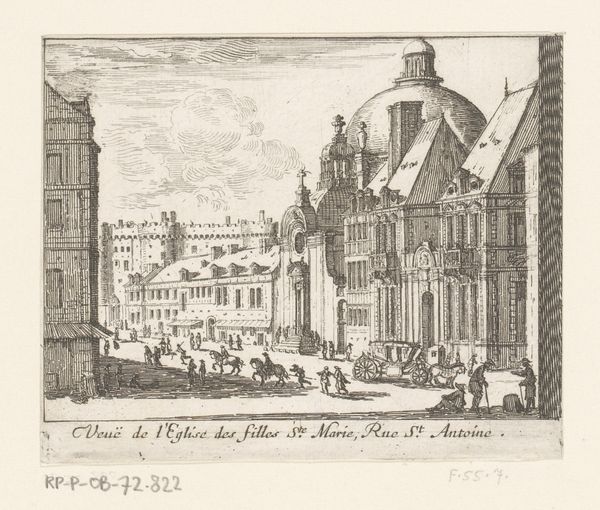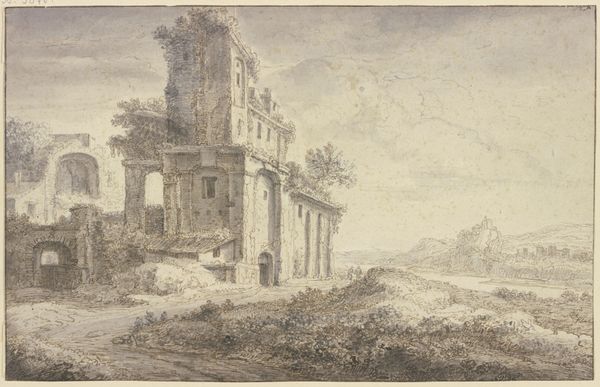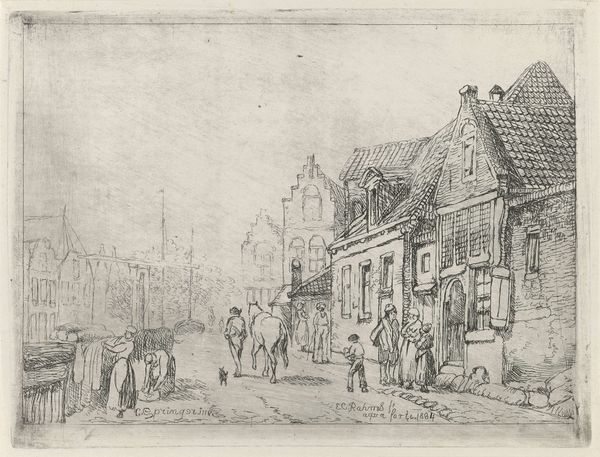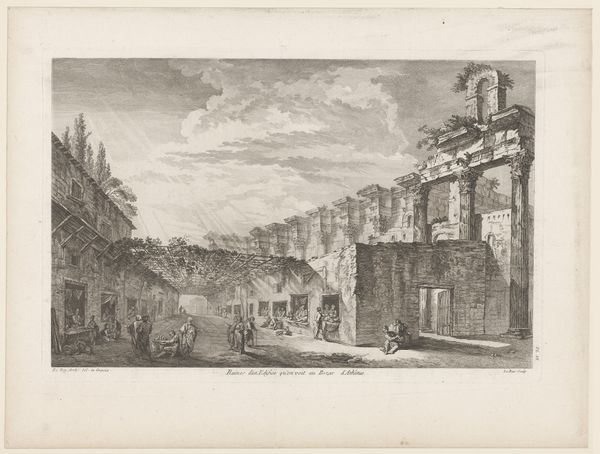
Demolition of the Old Vestibule of the Palais-Royal, Paris 1762 - 1772
0:00
0:00
drawing, print, watercolor, architecture
#
drawing
#
neoclacissism
#
water colours
# print
#
landscape
#
watercolor
#
cityscape
#
genre-painting
#
history-painting
#
watercolor
#
architecture
Dimensions: 9 5/8 x 11 1/4 in. (24.4 x 28.6 cm)
Copyright: Public Domain
Editor: So, here we have Pierre Antoine Demachy’s "Demolition of the Old Vestibule of the Palais-Royal, Paris," likely from sometime between 1762 and 1772. It looks like it is made of watercolor, ink and maybe some print? I’m struck by how ruinous and fragmented it looks, but somehow beautiful too, almost like a stage set. What do you see in this piece? Curator: Precisely. Let's observe how Demachy has structured the composition. Note the stark contrast between the architectural stability on the right and the violent deconstruction on the left. How does that contrast contribute to the overall visual experience? Editor: I guess the way the sunlight hits that standing structure, while the ruin is in partial shadow, gives it a feeling of… permanence against the chaos. Curator: Indeed. The architectural elements – the columns, arches, and cornices – serve as formal devices that order the image. Consider the geometry and how it interacts with the representation of destruction. Note how the composition uses vertical and horizontal lines to create depth, dividing the picture plane into distinct sections. Is there a balance? Is there a rhythm? Editor: It's interesting, now that you point it out, how the architectural details are actually emphasized by the destruction, not obscured. Like the exposed columns. So it becomes more about form rather than function. Curator: Precisely. It is an intense focus on the pure aesthetic qualities inherent in the structure itself. Demachy draws our attention not to the event of demolition, but to the pure, geometrical forms unveiled by it. It directs our gaze to the structure, the essence of architectural form laid bare. What does that bareness express? Editor: I think, to me, that contrast gives the picture energy; maybe even hope. From that perspective, it's not so ruinous, maybe more about change. Thanks for this take! Curator: And thank you, that thought leads us into further interpretations. Reflecting on the balance between ruin and geometrical form opens a fascinating lens.
Comments
No comments
Be the first to comment and join the conversation on the ultimate creative platform.
